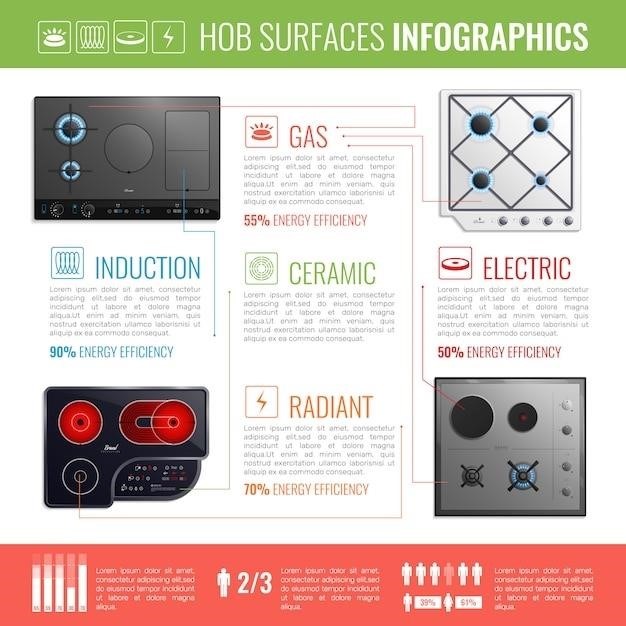New Testament Seminary Teacher Manual⁚ An Overview
This comprehensive manual assists seminary teachers in preparing impactful New Testament lessons. It offers 160 lessons for daily classes and 32 for weekly home-study, encompassing teaching suggestions, key doctrines, principles, and scripture mastery aids. The manual’s structure is designed to facilitate effective teaching and learning.
The New Testament Seminary Teacher Manual serves as a vital resource for educators, providing a structured approach to teaching the New Testament. Designed to enhance comprehension and application of scriptural principles, this manual offers a wealth of teaching suggestions, carefully selected to engage students and foster spiritual growth. It’s meticulously organized to cover the entire New Testament, ensuring comprehensive coverage of its rich content. The lessons within are not merely recitations of events but rather explorations of the profound doctrines and principles contained within the text; The manual encourages teachers to go beyond simple narration, prompting deeper analysis and personal application of these timeless truths. This approach aims to cultivate a richer understanding of the Savior’s life, teachings, and the establishment of His Church. The ultimate goal is to help students develop a stronger testimony of Jesus Christ and His gospel.
Utilizing the Manual’s Resources
The New Testament Seminary Teacher Manual is more than just a lesson plan; it’s a toolbox brimming with resources designed to maximize teaching effectiveness. Each lesson incorporates a variety of aids, including insightful teaching suggestions to spark engaging classroom discussions. These suggestions are carefully crafted to help teachers adapt their approach to suit diverse learning styles and classroom dynamics. Beyond the lesson plans, the manual provides access to supplementary materials, such as PowerPoints, videos, and additional online resources. These resources can be used to enhance the learning experience, offering diverse perspectives and enriching the understanding of complex theological concepts. Teachers are encouraged to explore these supplemental materials to tailor lessons to their specific student needs. This flexible approach allows for customization, making the manual adaptable to various teaching environments and student populations. Remember to integrate these resources strategically to maximize their impact on student learning and engagement.
Lesson Structure and Components
The New Testament Seminary Teacher Manual employs a consistent lesson structure to ensure clarity and facilitate effective teaching. Each lesson typically begins with a concise overview, stating the learning objectives and highlighting key themes. This is followed by a detailed section outlining the scripture passages to be covered, providing a roadmap for both the teacher and the students. The core of each lesson involves teaching suggestions, offering a variety of methods and approaches to engage students actively in learning. These suggestions often include discussion questions, activities, and visual aids to cater to different learning styles. To support deeper understanding, the manual incorporates sections dedicated to key doctrines and principles found within the scripture passages. Finally, the lessons often conclude with suggestions for assessment and follow-up activities, enabling teachers to gauge student comprehension and reinforce learning. This structured format ensures a cohesive and enriching learning experience.
Teaching Strategies and Techniques
The New Testament Seminary Teacher Manual emphasizes various teaching methods to foster engaging and effective learning experiences. It promotes active learning, adapting lessons for diverse learners and incorporating supplemental resources to enhance comprehension.
Effective Lesson Planning
Effective lesson planning is crucial for successful teaching, and the New Testament Seminary Teacher Manual provides a framework to guide teachers in this process. The manual suggests a structured approach, encouraging teachers to carefully consider the learning objectives for each lesson. This involves identifying key doctrines and principles from the scriptures, selecting relevant scripture passages, and developing engaging teaching activities. The manual also emphasizes the importance of incorporating various teaching methods to cater to different learning styles. By thoughtfully planning lessons, teachers can ensure that students actively participate, understand the material, and apply the principles learned to their lives. A well-planned lesson considers the time allocated, pacing, and the overall flow of information. Teachers are encouraged to use the provided resources in the manual to supplement their planning, enhancing the effectiveness of their lessons and creating a more meaningful learning experience for students. Pre-planning also allows for flexibility and adaptation during the class to meet the students’ needs and encourage interaction.
Engaging Students in Active Learning
The New Testament Seminary Teacher Manual strongly advocates for active learning strategies to enhance student engagement and comprehension. It suggests various techniques to move beyond passive listening, promoting deeper understanding and retention of the material. These methods include incorporating group discussions, encouraging student-led presentations, and using visual aids to illustrate key concepts. The manual emphasizes the importance of creating a classroom environment that fosters open communication and respectful dialogue, where students feel comfortable sharing their thoughts and insights. Interactive activities, such as role-playing or debates, can transform the learning experience, making it more dynamic and relevant to students’ lives. The manual also recommends using technology effectively to supplement lessons. By actively involving students in the learning process, teachers can create a more stimulating and rewarding learning environment, fostering a deeper connection with the scriptures and their principles.
Adapting Lessons for Diverse Learners
The New Testament Seminary Teacher Manual stresses the importance of creating an inclusive learning environment that caters to the diverse needs of all students. Recognizing that learners possess varying learning styles, strengths, and challenges, the manual provides guidance on adapting lesson plans to ensure accessibility and engagement for every individual. This involves employing a variety of teaching methods, such as visual aids, hands-on activities, and auditory learning components, to cater to different learning preferences. The manual also suggests strategies for supporting students with learning disabilities or other special needs, emphasizing the importance of providing appropriate accommodations and modifications. Furthermore, it encourages teachers to create a supportive classroom culture where students feel comfortable asking questions and seeking clarification. By embracing inclusivity and differentiation, teachers can maximize learning opportunities for every student, promoting a sense of belonging and fostering success for all.

Curriculum Content and Themes
The New Testament Seminary Teacher Manual focuses on key doctrines, scriptural mastery, and integrating supplemental resources to enrich the learning experience. It emphasizes the Savior’s life and teachings.
Key Doctrines and Principles
The New Testament Seminary Teacher Manual meticulously outlines core doctrines and principles central to the Christian faith. These foundational beliefs, deeply rooted in the scriptures, provide a comprehensive understanding of Jesus Christ’s life, ministry, and teachings. The manual expertly guides teachers in presenting these doctrines clearly and engagingly, fostering a deeper comprehension among students. Emphasis is placed on the Savior’s role as the Messiah, His atoning sacrifice, and the importance of repentance and faith. Further exploration delves into the establishment of the Church, the role of the Holy Ghost, and the blessings of temple ordinances. The manual’s approach ensures students gain a robust understanding of these essential principles, empowering them to apply these teachings in their lives and strengthen their testimonies. The interconnectedness of these doctrines is highlighted, fostering a holistic and meaningful learning experience. The teachings are presented within their historical and cultural contexts, enriching understanding and appreciation. The manual encourages teachers to adapt their teaching methods to resonate with diverse learning styles, ensuring all students benefit from this enriching curriculum. The overall aim is to cultivate faith, knowledge, and spiritual growth in each student.
Scriptural Mastery and Application
The New Testament Seminary Teacher Manual emphasizes not just reading scripture, but mastering and applying its principles. It provides specific guidance on helping students understand the context, historical background, and cultural nuances of the New Testament texts. The manual encourages teachers to employ diverse teaching methods to facilitate deeper comprehension and retention of key scriptures; Beyond rote memorization, the focus is on internalizing the meaning and applying the teachings to daily life. Students are guided to identify key themes, doctrines, and principles within the scriptures, connecting them to their personal experiences and circumstances. The manual suggests activities and discussions designed to promote personal reflection and application of scriptural truths. It encourages teachers to create opportunities for students to share their insights, testify of gospel principles, and develop their own understanding of the scriptures. This approach fosters a stronger connection between scriptural study and personal spiritual growth, solidifying faith and prompting righteous actions. The ultimate goal is to equip students with the ability to effectively utilize scripture to answer life’s challenges and find guidance from the Savior.
Integrating Supplemental Resources
While the New Testament Seminary Teacher Manual provides a robust foundation, it encourages the use of supplementary materials to enrich the learning experience. Teachers are prompted to consider a variety of resources, including Church-produced videos, presentations, and online materials, to enhance student understanding and engagement. The manual suggests ways to incorporate these resources effectively, ensuring they complement rather than replace the core curriculum. It emphasizes the importance of selecting resources that align with the doctrinal focus and learning objectives of each lesson. Teachers are encouraged to exercise discernment in choosing materials, ensuring their accuracy, appropriateness, and overall contribution to the learning process. The integration of supplemental resources can cater to diverse learning styles, providing visual, auditory, and kinesthetic learning opportunities. By thoughtfully integrating additional materials, teachers can create a more dynamic and engaging learning environment, catering to individual student needs and preferences. This approach promotes a more holistic and meaningful understanding of the New Testament.

Assessment and Evaluation
This section details methods for assessing student comprehension, offering feedback, and measuring lesson effectiveness within the New Testament Seminary curriculum. It provides practical strategies for evaluating both individual and overall class progress.
Assessing Student Understanding
The New Testament Seminary Teacher Manual emphasizes diverse assessment strategies to gauge student comprehension. These methods go beyond traditional testing, incorporating formative and summative approaches. Formative assessments, integrated throughout the lessons, provide ongoing feedback and adjustments. Examples include brief quizzes, class discussions, and informal observation of student participation. Summative assessments, conducted at the conclusion of units or larger sections, offer a more comprehensive evaluation of learning. These might include written exams, presentations, or projects requiring application of learned principles. The manual suggests using a variety of question types—multiple choice, short answer, essay—to cater to different learning styles and assess various levels of understanding. Careful consideration should be given to the balance between objective and subjective assessment methods to obtain a holistic view of student learning. The ultimate goal is to understand not just what students know, but also how well they can apply gospel principles to their lives. Regular assessment ensures timely identification of areas needing further attention, promoting student growth and success in mastering the New Testament.
Providing Feedback and Encouragement
Effective feedback is crucial for student learning and growth, as highlighted in the New Testament Seminary Teacher Manual. The manual advocates for timely and specific feedback, focusing on both strengths and areas needing improvement. Constructive criticism should be delivered in a supportive and encouraging manner, fostering a positive learning environment. Teachers are encouraged to personalize feedback, considering individual student needs and learning styles. This might involve written comments on assignments, verbal praise during class discussions, or individual conferences to address specific concerns. The emphasis is on building confidence and motivation, rather than simply pointing out mistakes. Positive reinforcement, celebrating successes, and acknowledging effort are key components. The manual suggests focusing on the process of learning as much as the outcome, emphasizing the importance of perseverance and striving to understand gospel principles. By creating a supportive and encouraging atmosphere, teachers can help students develop a love for learning and a deeper understanding of the New Testament.
Measuring Lesson Effectiveness
The New Testament Seminary Teacher Manual stresses the importance of regularly assessing lesson effectiveness to ensure student learning and adjust teaching strategies as needed. While formal assessments are valuable, informal methods are equally crucial. Observing student engagement during class discussions, noting participation levels, and gauging comprehension through questioning are vital. Analyzing student responses on assignments and quizzes offers insights into their grasp of key concepts and doctrines. The manual suggests considering the overall learning environment—was it conducive to learning? Did students feel comfortable participating? Teacher self-reflection is paramount; reviewing lesson plans and identifying areas for improvement based on student feedback and observations is essential. Post-lesson adjustments are encouraged, ensuring future lessons address any identified weaknesses. The ultimate measure of effectiveness lies in whether students are developing a deeper understanding of the New Testament and applying its principles to their lives. Tracking student progress over time provides a comprehensive picture of the effectiveness of the teaching methods employed.


